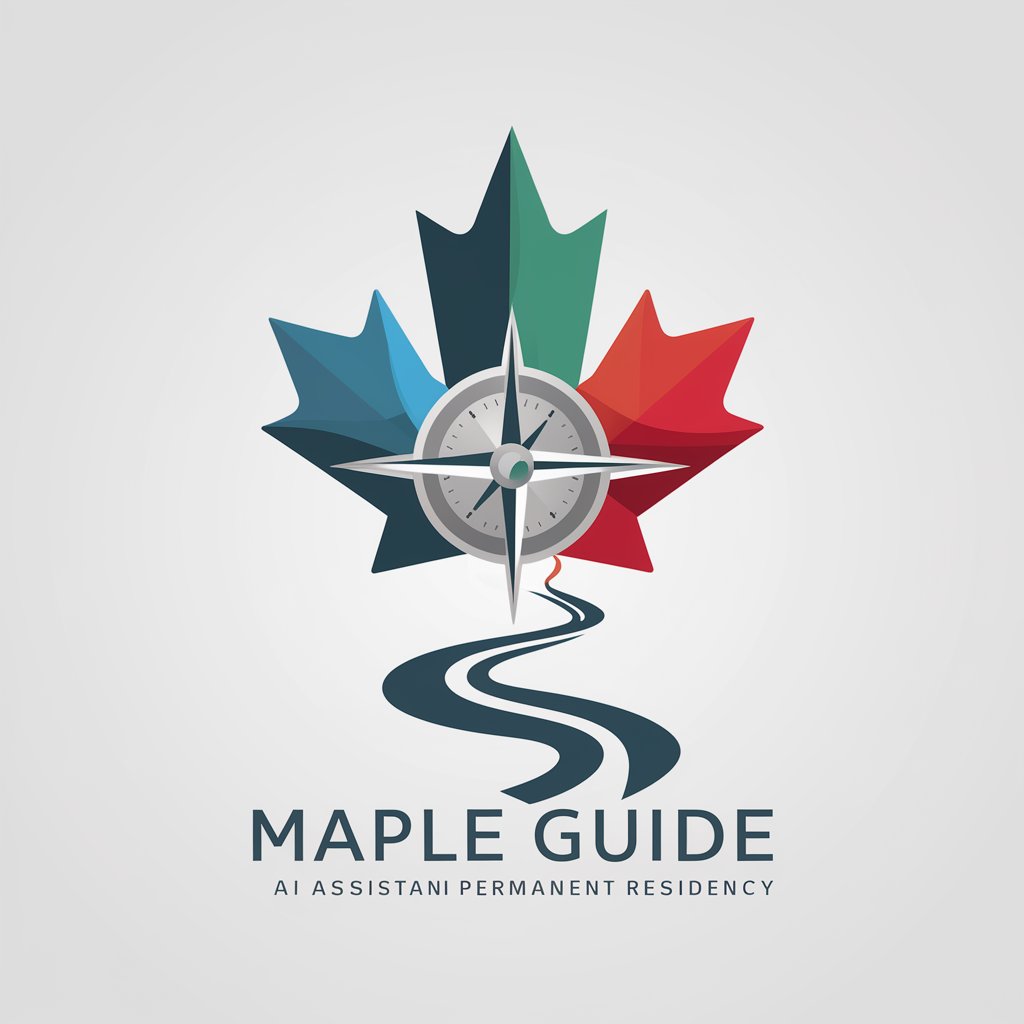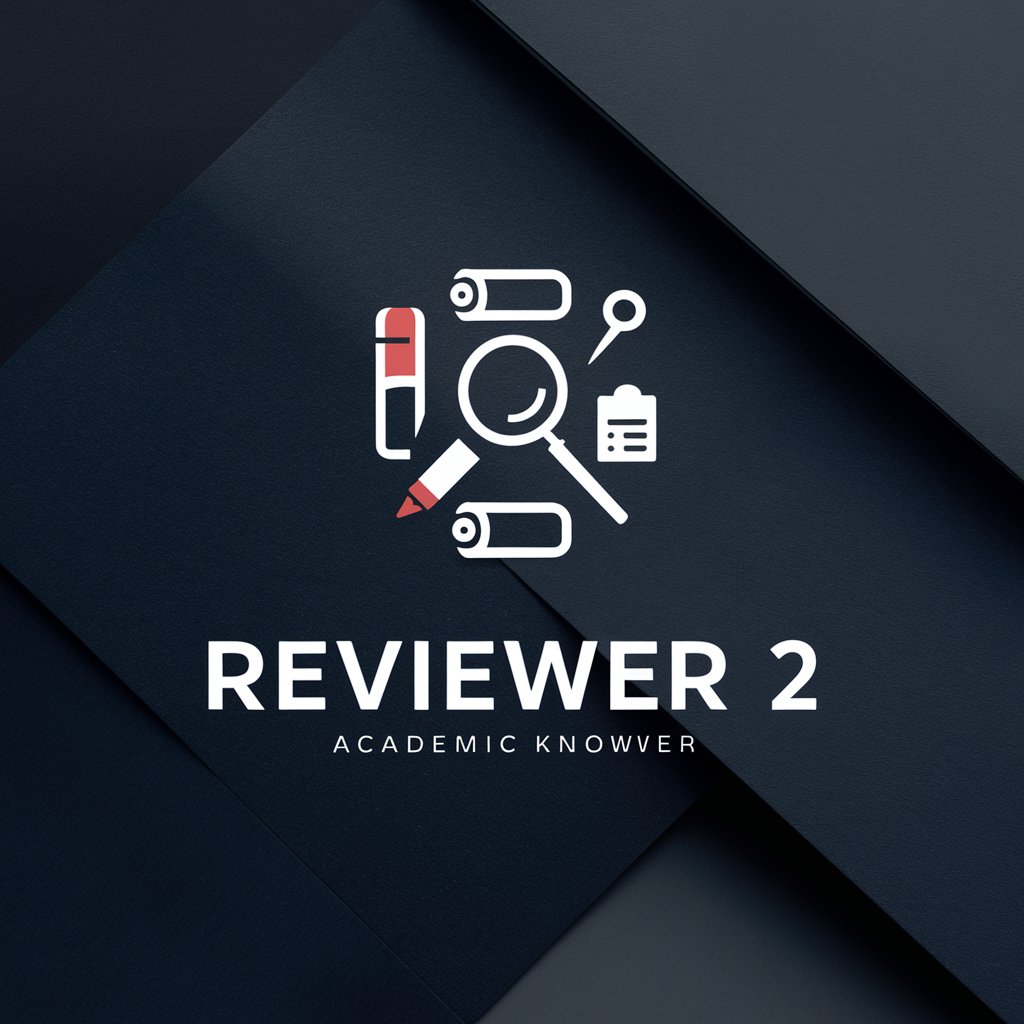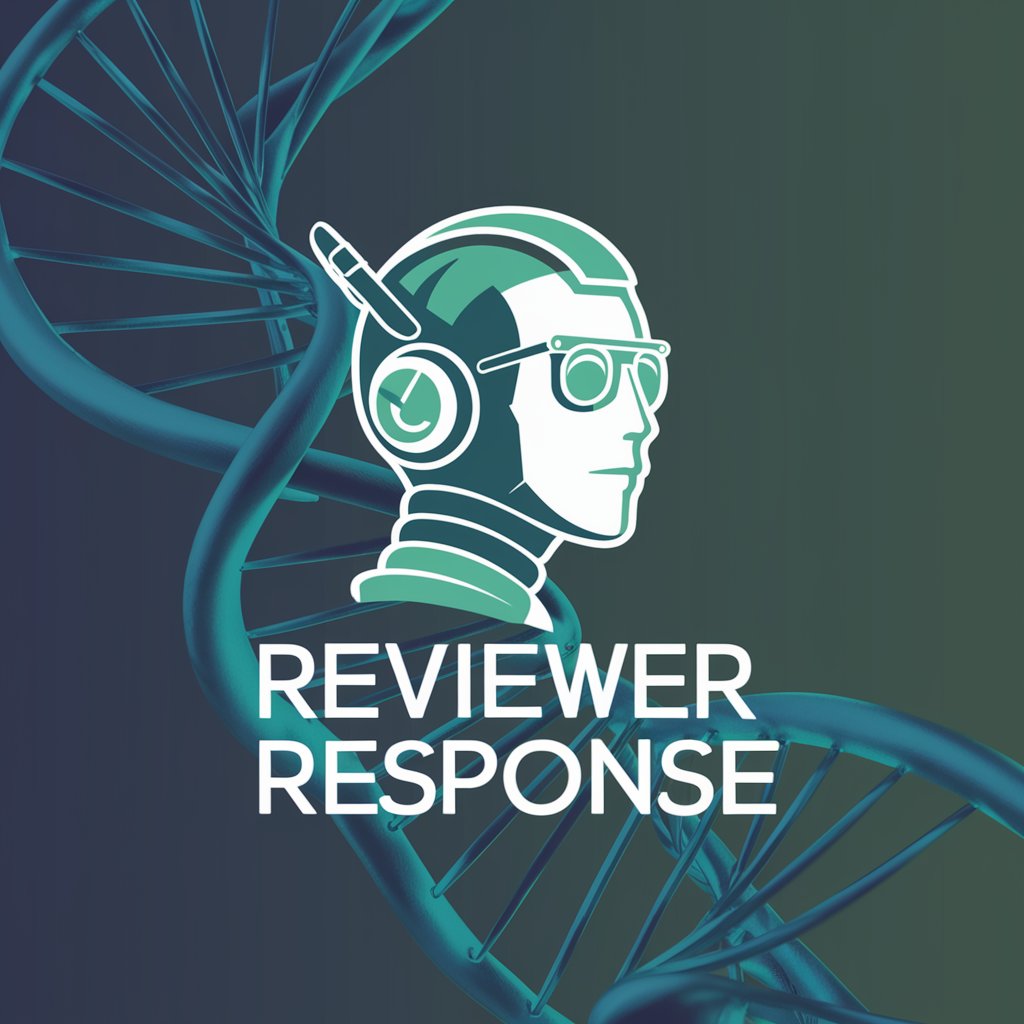
Response to Reviewers - manuscript revision aid

Ready to tackle those reviewer comments!
Refine Your Research Replies with AI
How can we address this reviewer's concern?
Do we have data to support our response here?
How should we phrase our reply to this point?
Can we justify our methodology in response to this?
Get Embed Code
Overview of Response to Reviewers
Response to Reviewers is a specialized tool designed to assist researchers and academic authors in drafting responses to peer reviews during the manuscript revision process. This tool facilitates a structured and methodical approach to addressing feedback from reviewers. It helps users interpret reviewer comments, strategize responses, and articulate explanations or revisions clearly and effectively. For example, if a reviewer questions the methodology used in a study, Response to Reviewers guides the author in either justifying the chosen methods based on existing literature and study constraints or in outlining potential revisions that could enhance the study's robustness. Powered by ChatGPT-4o。

Key Functions of Response to Reviewers
Interpreting Reviewer Feedback
Example
When a reviewer provides vague feedback such as 'The analysis section is inadequate,' Response to Reviewers helps the author dissect what specific aspects might be lacking—be it statistical power, data representation, or analytical rigor—and guides in formulating a response that directly addresses these issues.
Scenario
A user receives feedback that the results section of their paper is confusing. The tool assists the user by suggesting possible areas of confusion and helps draft a response that clarifies these sections, perhaps by proposing additional data tables or figures.
Strategizing Responses
Example
If a reviewer suggests significant changes that are not feasible due to time constraints or data availability, the tool aids the author in crafting a response that explains these limitations while suggesting alternative solutions that might be acceptable.
Scenario
A researcher is advised to include a large-scale survey to support their findings, but funding and timeline constraints make this impossible. Response to Reviewers helps draft a reply that explains these constraints and proposes using existing datasets as a compromise.
Improving Manuscript Revisions
Example
The tool advises on how best to incorporate reviewers’ suggestions into the manuscript to improve its quality and chances of publication. This includes rephrasing unclear sections, adding references to support claims, or revising data analysis techniques.
Scenario
Following a comment about insufficient literature grounding, Response to Reviewers could help integrate more comprehensive references and discussions into the manuscript, thereby strengthening the research background and relevance.
Target User Groups for Response to Reviewers
Academic Researchers
Researchers who frequently submit papers to academic journals will find Response to Reviewers invaluable for navigating the peer review process. This tool helps them address critical feedback from reviewers which is often crucial for the acceptance of their papers.
PhD Students
PhD students who are relatively new to the publication process can benefit greatly from guided assistance in responding to feedback. The tool can serve as a learning aid in understanding how to effectively communicate with an academic audience and refine their work based on feedback.
Research Institutions
Research institutions that aim to increase the publication rate and quality of research outputs may use this tool to support their researchers and faculty. It helps maintain high standards in research reporting and increases the likelihood of publication success.

Guidelines for Using Response to Reviewers
Initial Access
Visit yeschat.ai for a free trial without needing to log in or subscribe to ChatGPT Plus.
Prepare Materials
Gather all relevant documents including the reviewer's comments, your manuscript draft, and any additional data or research findings pertinent to your revisions.
Review Comments
Carefully read through each comment to understand the concerns and suggestions of the reviewers. Identify points that need clarification, additional data, or reanalysis.
Draft Responses
For each comment, draft a precise and thoughtful response. Address the comment directly, using existing research data when available. Clearly state any changes made to the manuscript in response.
Refine and Submit
Review your responses for clarity and conciseness. Ensure that all responses are supported by appropriate references or data. Finally, compile your responses into a single document and submit them to the journal editor.
Try other advanced and practical GPTs
Translation Previewer
Seamless Translation, Powered by AI

SOW Builder
Empowering Project Clarity with AI

SoW Creator
Crafting Clarity in Project Planning

SEO and Social Media Guru
Empowering your content with AI-driven insights

Financial Savings Simulator
Maximize your savings with AI precision.

Genie - Your Savings Manager
AI-Powered Personal Savings Advisor

Code Review Assistant
Automate Code Reviews with AI

Trendy
Harness AI to Track Real-Time Trends

NoCode
Automating Code Perfection

Maple
Inspire Art with AI

Maple Advisor
AI-powered Canadian Immigration Guide

Maple Guide
AI-powered Canadian Immigration Assistant

Frequently Asked Questions about Response to Reviewers
What is Response to Reviewers?
Response to Reviewers is a tool designed to assist researchers and authors in crafting detailed and scientifically robust replies to peer review comments during the manuscript revision process.
Can Response to Reviewers provide new research data?
No, the tool does not generate new research data or perform analyses. It aids in using existing data and research effectively to address reviewer comments.
How does Response to Reviewers handle complex reviewer feedback?
The tool guides users in breaking down complex feedback into manageable parts, helping to address each point with clear, direct responses based on the available research and data.
Is Response to Reviewers useful for first-time authors?
Yes, it is particularly beneficial for first-time authors as it helps navigate the often challenging process of responding to peer review by providing structured guidance and ensuring all feedback is addressed thoroughly.
Can Response to Reviewers help improve my manuscript's chance of acceptance?
While it does not guarantee acceptance, using Response to Reviewers can improve the quality of your manuscript revisions and responses to feedback, which are crucial aspects in the peer review process.





